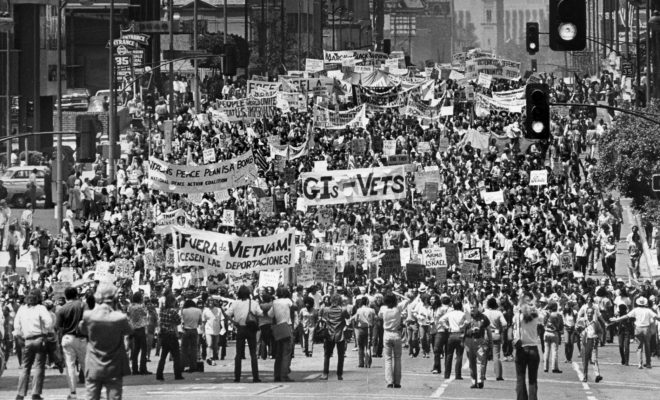Golf and Water: The industry is ready for what comes next

The only reliable way to predict the future is to invent it. That’s a line attributed to computer pioneer Alan Kay, but I’ve long suspected that Yogi Berra was his inspiration.
In many ways the Southern California golf industry “invented” this particular moment; not the drought…that’s not something anyone in his right mind would invent. Rather, the industry invented a set of responses that anticipated the demands of the drought so well that it managed to navigate a set of challenges many thought would cause a cascade of failures and closures.
Hardships and struggles there have been; failures and closures very few and far between. The whys and wherefores are documented elsewhere in this and previous editions of FORE — investment in maximally efficient irrigation technologies, elimination of certain water intensive practices, turf removal, recycled water, wetting agents, drought contingency plans and regular engagement of regulatory/legislative authorities.
All of the above can get the industry through a fifth year of drought should the anticipated El Nino not come to pass. But there’s a future to invent beyond the current emergency that we need to start thinking about.
More good news: The industry is already heading down that road. Just as the game took the lessons it learned from the 2007-2009 drought and put them in place for the current crisis, the game is learning and doing as I write these words.
We will not be reverting to any recognizable version of the status quo once it begins raining and snowing again. Thoroughly understanding that reality, the golf industry is not relying upon the “whys and wherefores” of the moment; it is plowing new ground — some of it technological, some of it cultural.
When environmentalists decry the inappropriateness of irrigating golf courses with “drinking water,” the game has stopped disagreeing and begun to make removing all of California’s golf courses from the potable grid the central organizing principle of its Sacramento legislative agenda. An aspirational goal to be sure, but one that is increasingly coming to fruition through means that just a few years ago seemed more science fiction than science fact.
The City of Pacific Grove (adjacent to Pebble Beach) has awarded a $7.4 million contract to a private firm for the construction of a facility that “scalps” available urban effluent and turns it into recycled water for its municipal golf course, an adjoining park and a nearby private cemetery.
Diablo Country Club in Contra Costa County is slated to invest $10 million in an identical facility that provides recycled supply for just one golf course. They are the first out of this particular box, but as the cost of water goes steadily up and access to it becomes ever more precarious, what was once a bad return on investment begins to look like today’s version of the prescience that saw the industry so well through this fourth year of drought.
Much has been made of the rich financial incentive that spawned so much turf removal in 2015. Too little has been made of those turf removal programs that were either performed without benefit of rebate dollars or with benefit of rebate dollars so meager that they hardly constituted much of an incentive.
Examples in the former category generally are such “examples” because they didn’t want to publicize their respective projects. Examples in the latter category would be the 17 golf courses in the Coachella Valley that are performing turf reductions right now with benefit of a rebate that maxes out at $105,000, a mere fraction of the cost of a typical turf reduction project. Contrary to what you may have heard, the demise of the MWD rebate program won’t spell the demise of golf course turf reduction in Southern California.
Many predicted that golfers acculturated to the “Augusta syndrome” wouldn’t warm to firm and fast playing surfaces, a “golden” look, and California-friendly, drought-tolerant species in lieu of turf — in other words a “Mediterranean” look where the climate is semi-arid and a desert look where the climate is desert. They predicted that once the region’s golf courses cut back on irrigation, the region’s golfers would cut back on golf. That didn’t happen; indeed, in many places the opposite happened — a hopeful harbinger of how golfers are likely to respond to the new normal that awaits us.
Inventing our own future? That may be a stretch. But adapting successfully to changed circumstances; that is starting to look like a given.










